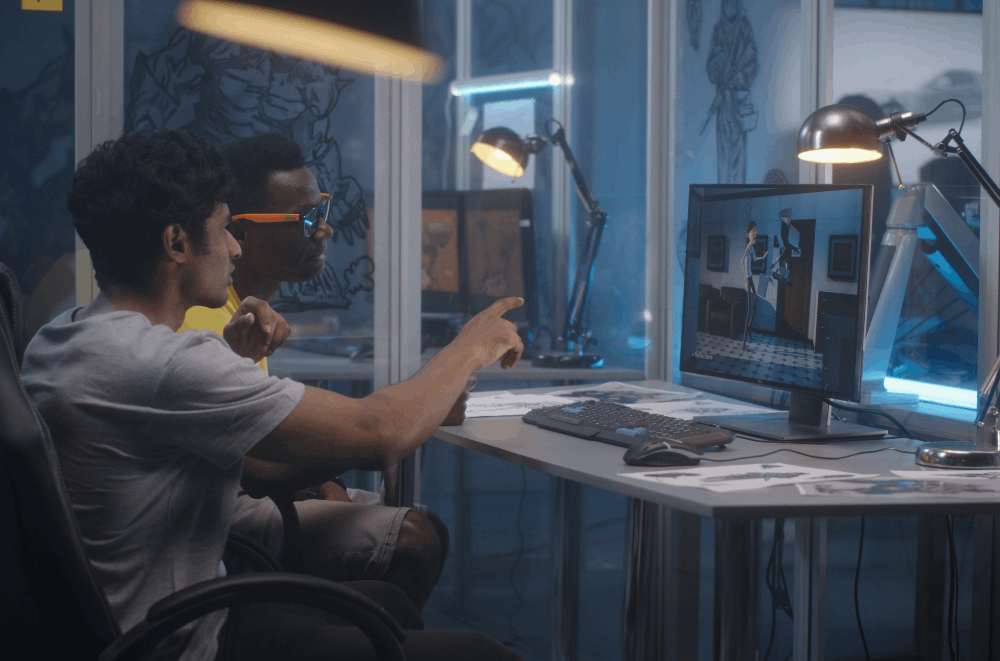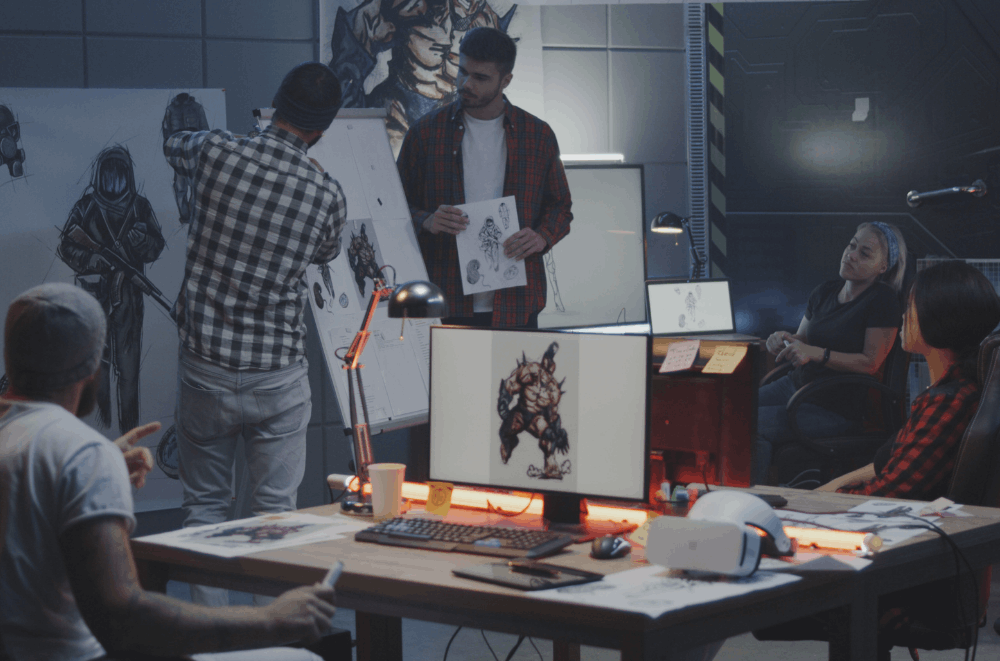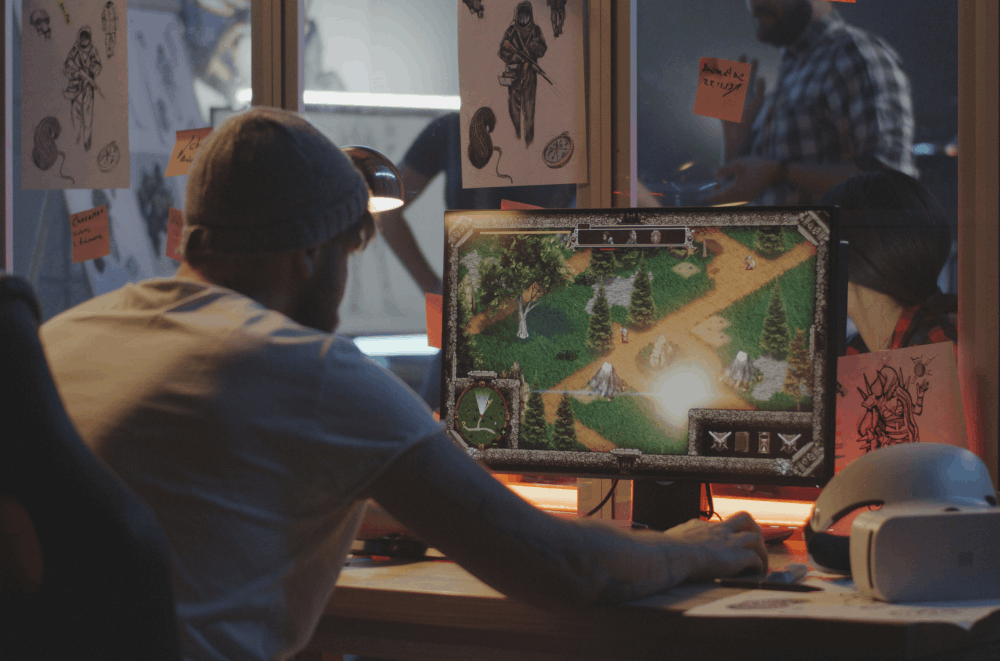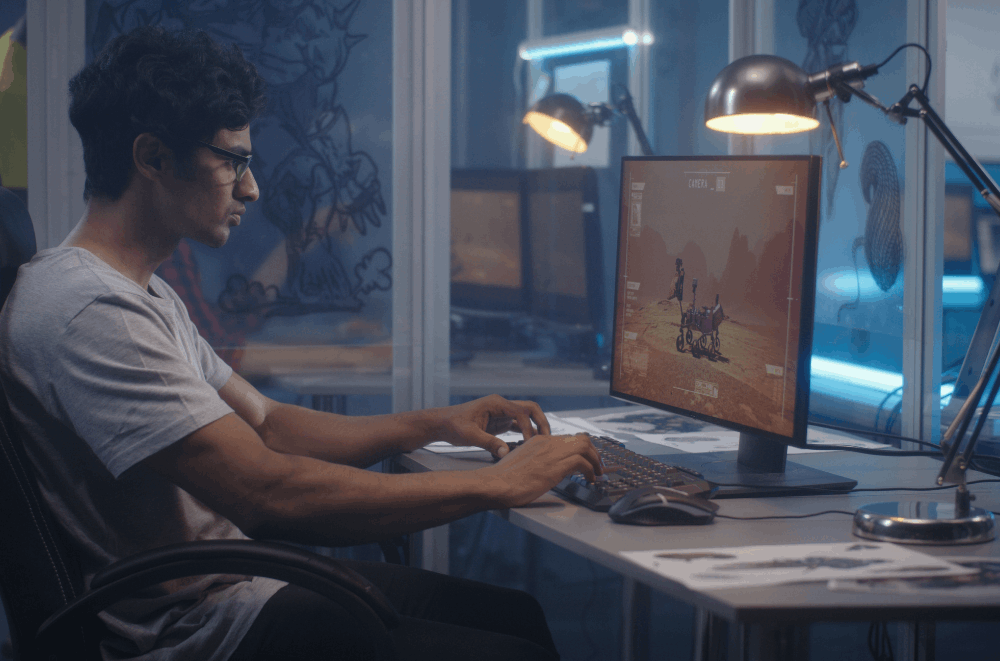For gamers, the hours playing a great game is time well-spent. Between starting an average single-campaign game and finishing it, I will probably spend somewhere between 15 to 20 hours. This can depend on the type and style of the game, but more than 15 hours of game time is what I generally expect.
Such length of gameplay is ideal for casual and hardcore gamers alike. However, the time developers spend to make the game is much more than 15 to 20 hours, especially when deploying updates and patches.
From planning to post-production, it seems that game creation is a never-ending process. That is until the game has lived the course of its life. To understand how developers come up with the games we enjoy today, here’s a step-by-step detailing of the process.
- Pitching And Concept Presentation
- Making The Game Design Document
- Building A Prototype
- Producing The Game
- Marking The Milestones

Pitching And Concept Presentation
The planning stage is the essential step toward creating a video game that its target audience will surely appreciate, if not love. This is where the team comes up with a concept by going through high concepts and pitches.

High concepts are only a few sentences long and describe what the game is about, while a pitch is a summary of what makes the game unique and its potentials for sales and profitability. It is no secret that prospective revenues play a huge role in deciding whether a game will be pushed to production or not.
Game designers are often in charge of the pitch, and they present in front of publishers, who will decide to green-light the project or not. In some cases, especially in big companies, the designers and developers may need to create a demo for the publisher.
As a player, I would prefer to get funds for a great game alone, but If I were a publisher, I would want to fund a project that would sell to the target market and, hopefully, the general audience. The high concept and pitch can help me make the right decision.
Detailing The Concept
Putting together a concept document or game plan is the next step after getting approval from the publisher. This is the stage where the developers and designers compile every essential thing the audience needs to know about the game, including the high concept and the pitch.
I expect the concept document to provide information about the genre, target audience, features, setting, story, and the hardware platform it will be developed for. The development team will also need to provide an estimated timeline for completing the project.
I want to point out that the development team is usually composed of designers, programmers, and sound engineers. As early as creating the concept document, these team members will need to show off their skills.
Making The Game Design Document
Just because the publisher has approved the proposal and concept for funding does not mean that the team can jump right into production. The development team will need to make the game design document (GDD).

A GDD details more particular aspects of the game, including major elements of the gameplay, the concept of the game itself, and initial sketches for different elements. In many cases, a prototype of some parts of the game is created, and the GDD to have tangible proof of concept for the project.
One thing I find interesting about the development of a GDD is that it never stops throughout the entirety of the production. It is constantly updated. This is because new ideas often come up during production and these changes need to be documented to capture the entire process.
Given this, I expect that the GDD will cover all the pre-and post-production stages that the game went through, including the high concept, pitch, concept proposal, prototyping, designing, programming, art and audio production, testing, milestones, release, and maintenance.
Game Content And Structure
As we are still in the pre-production stage at this point, the GDD will contain details about the game’s content and structure. This could be a mix of texts, images, concept arts, diagrams, and media files that show proposed and chosen designs. It also spells out the game engine to be used.
The thing about GDDs is that they are often required by companies, so meticulous documentation is needed. For the pre-production part, I expect that GDD to provide the decision-making process for the story, characters, environment design, gameplay, art, sound and music, interface and controls, and accessibility.
As I mentioned, games, while developers and gamers may be passionate about making and playing them, are still created for profit. The GDD structure will need to include plans on monetizing the game upon completion.
Building A Prototype
An essential aspect of the game design document is the prototype. Depending on the demands of the publisher, a demo or an initial sample of a game may be required at the concept proposal stage or the creation of the GDD stage.

However, the development team will eventually need to build a prototype sooner or later. This lets them explore their options and strategies, including algorithms, the game’s usability, and other essential aspects of the game, but on a smaller scale as prototypes often feature only a section of the game.
Ultimately, I see prototypes as a proof of concept of the project and a testing ground for developers. The prototype, however, does not need to be directly digital. Developers typically do the prototyping on paper because it is more convenient and with minimal risks of damages if the project is canceled.
I find the need to emphasize that little time is given to the prototyping process and the testing of the prototype. Often, the team needs the help of their most capable programmers and designers. The success of the prototype means that this current design will be retained but refined.
Refinement Of The Design
Refining the design and concept can be done thanks to the prototype. This model helps developers find places for improvement, such as discrepancies and bugs early on. The goal of the refinement process is to smoothen out rough edges found on the prototype.
The game’s concept, which should be established in the earlier steps, will guide the refinement stage.
Producing The Game
The development team already knows how to code the game in this step, thanks to the demo, prototype, and refining stage. Unfortunately, most of the progress made during the earlier models tends to be scrapped or not used for the final game.

This is why the programmers and designers continue to collaborate during the production. Don’t get me wrong, though. Designers need to have artistic and writing skills, but they also have technical skills, just like programmers.
While designers are expected to implement and change the design to achieve the main goal and vision of the team, the programmers use their skills to establish the foundation needed to achieve the game design. They introduce features and fix flaws, as well.
The art and audio production is also part of the development team. They create the visuals and sounds that will be incorporated into the game. Then, the programmers and designers work to place art and audio into the game design.
Quality Assurance
To finish off the production, the team conducts testing and quality assurance to ensure that the game is not broken and is playable. This step is important to ensure that the code and features developed a few months prior still work perfectly.
The testing stage covers features that have been placed before, during, and after the production to ensure that the game would not have any problems.
Marking The Milestones
After the quality of the game has been assured, I would assume that the game is now ready for release, but this is not the case. The team will need to go through milestones to ensure that the game will be at its best state when released.

The project will need to have a first playable version, which features the essential gameplay and assets. However, this is not complete. It needs to reach the alpha version in which all features are incorporated, and the game is playable. This version could be released as an alpha release.
Regardless, this still does not mean that the game is complete. Should the developers find no need to add new code after the first playable and alpha stages, they can freeze the code on the code freeze milestone. Then, beta testing and release follow once bug fixes are the only things needed to be addressed.
Once all the bugs are fixed, the code release milestone has been reached, which means that the game can be shipped to be reviewed by console companies. After it has been approved, the team creates a gold master, which will be the final reference build.
Maintaining The Game
Once the game has been released a year or so after it was announced, the team will need to maintain the game. This was not a huge thing in the past, but it has become necessary in the era of online games and over-the-air updates.
The team continues to work to improve the game, introduce new features, fix bugs that come from added code, and other similar matters.
Closing Thoughts
The production process can be grueling. Knowing this, gamers like aspiring developers and me can appreciate the games and the developers even more.